Having a strong vertical enhances any athlete in any sport. However, when you think of a sport that most commonly exhibits a vertical jump during game-time, its basketball. Check out this workout specific to vertical jump training for basketball.

VERTICAL JUMP TRAINING FOR BASKETBALL
1. Single leg pogo jumps
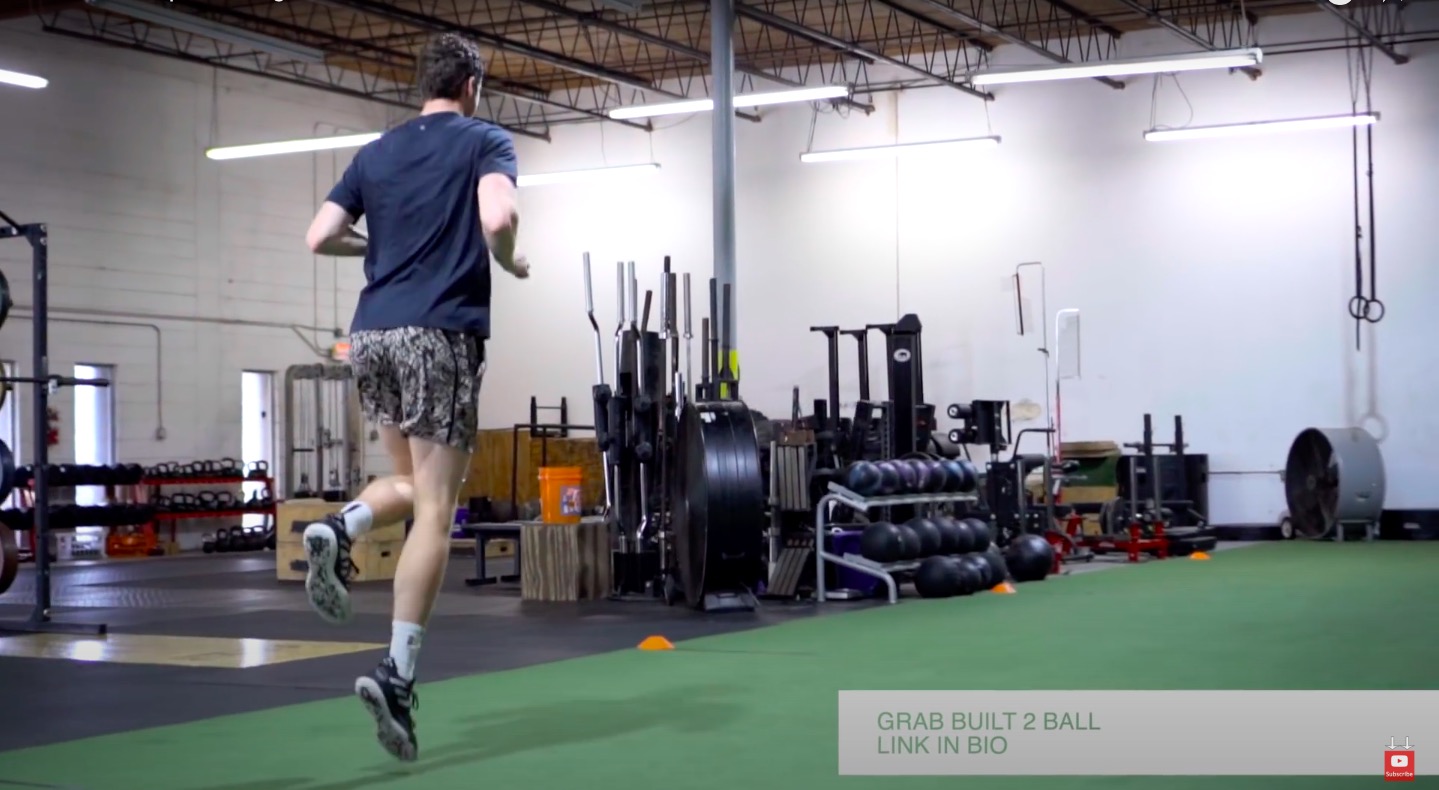
Begin your workout with some quick, speed drills to get the nervous system firing and the lower leg activated. I like to have my athletes perform 2 sets of 10yds on each leg.
HOW TO: Standing on one foot, explode off the floor and travel forward for 10 yards getting as much height as possible. Use your arms to proper you.
2. Alternating High/Low Pogo Jumps
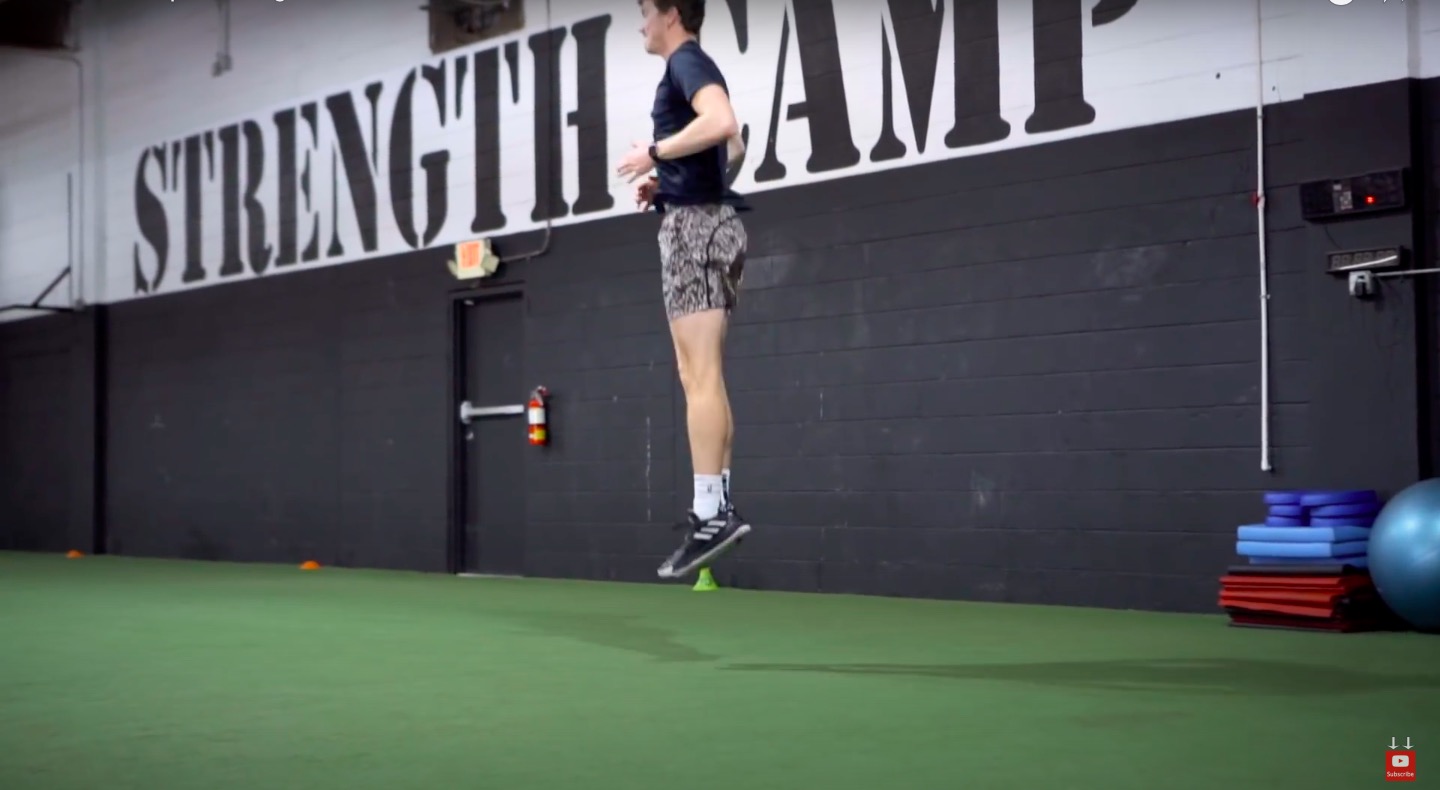
This next round of pogo jumps are stationary. Think about absorbing and producing as much force off of the ground as possible by keeping the knees a bit stiffer.
HOW TO: Using the power of the lower leg (feet and ankles), you’ll alternate pogo jumps in place for normal height and going extra high. Every time you touch the ground, power right back up again to the next jump.
3. Alternating Sprinter Step-Ups

These are a great drill for producing vertical power and force. Sprinter step ups also make you reactive and quick which is essential when taking the ball to the rim through a bunch of defenders.
HOW TO: Start facing a plyo box, with one foot on the box. Pushing off the ball of the foot, allow the knee to travel over the toe. You’ll explode vertically and switch feet in the air. Decelerate as you absorb force through the leg on your landing.
You can start with a few sets on a bench, and then move up to a taller plyo box. Start with 30 seconds of alternating nonstop.
4. Single Leg Box Jump- Land Two
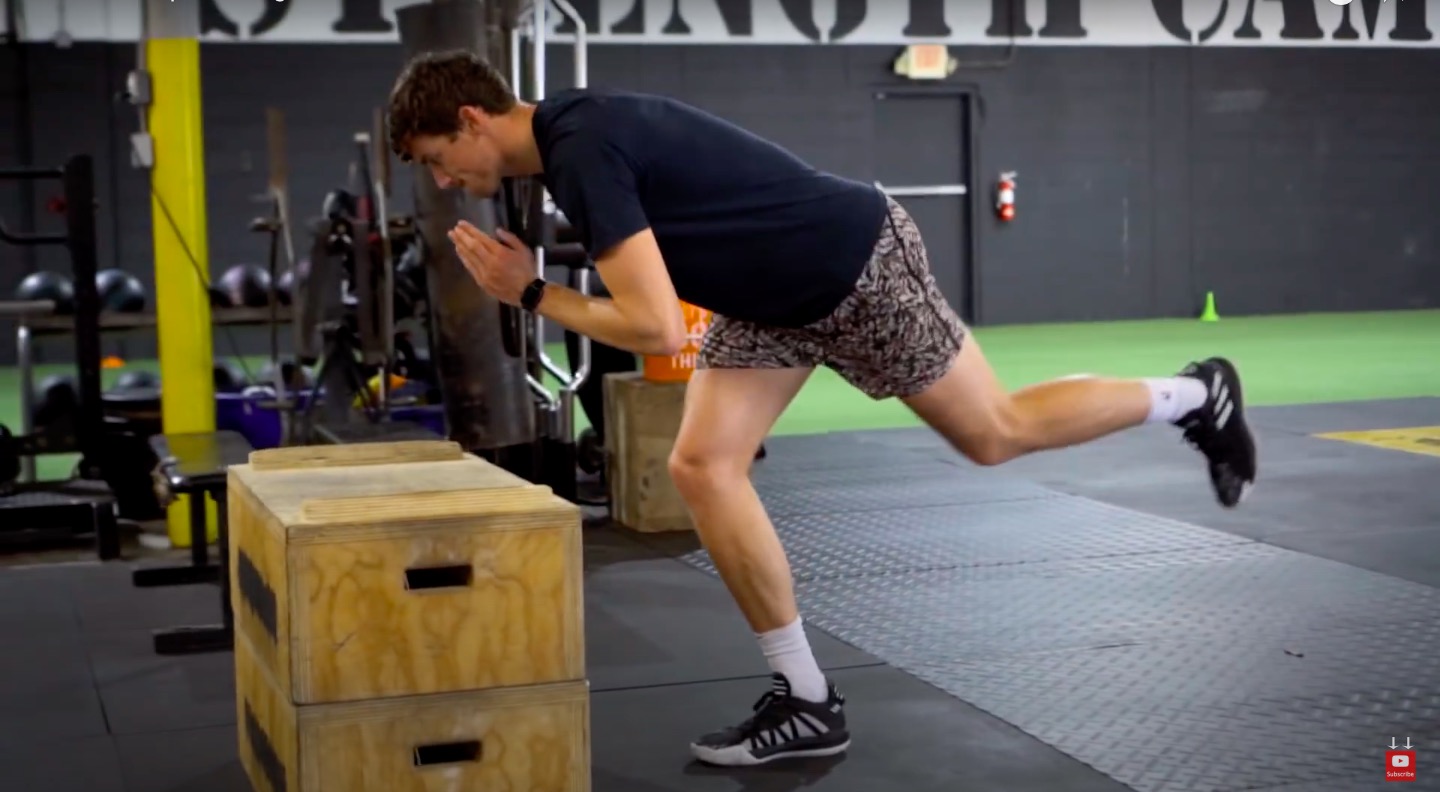
These box jumps allow you to strengthen each leg individually to result in greater lower body power. Your starting position should be strong isometrically as you isolate the glutes and hamstrings.
HOW TO: Begin by pushing the hips back into a quarter squat. Bring the knees apart to jump off one leg lowly. Using your arm swing for momentum, power up off one foot and land on the plyo box with both feet.
Once you get comfortable with these, you can start increasing the height of the plyo boxes. Perform 2 sets of 4 reps on each side.
5. Single Leg Approach Jump
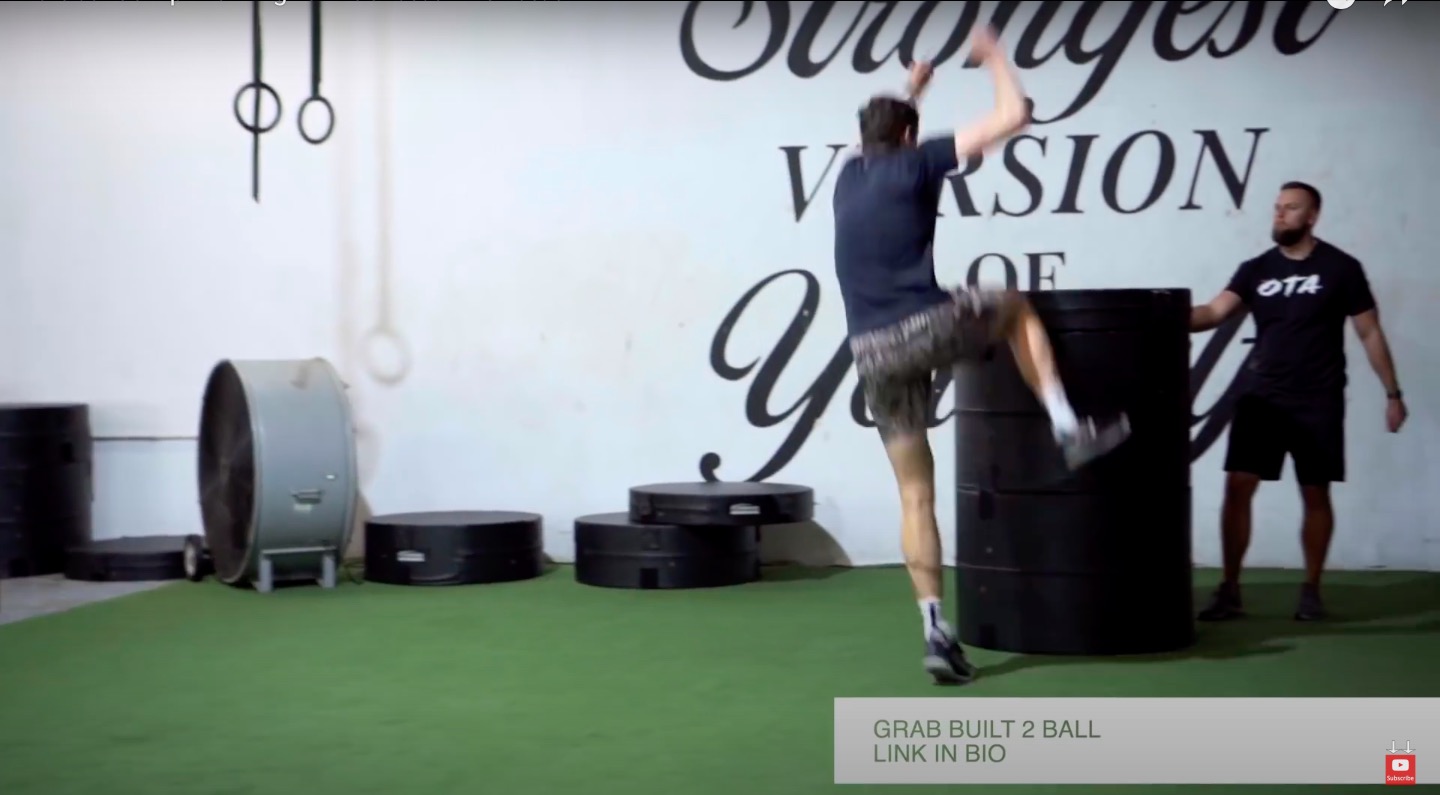
This is a great drill when vertical jump training for basketball. The single step approach makes this similar to going for a layup. Adding in a bit of momentum allows you to do an even higher box jump and begin getting comfortable with new heights.
HOW TO: From a tall plyo box, find the proper distance that it takes you to run in with a single step. Start your approach and and with the final step, you should be hitting that quarter squat, pushing the hips back and driving off one leg.
Land on the plyo box with two feet. Perform anywhere from 6-8 sets of 1 jump.
6. Skater Jumps
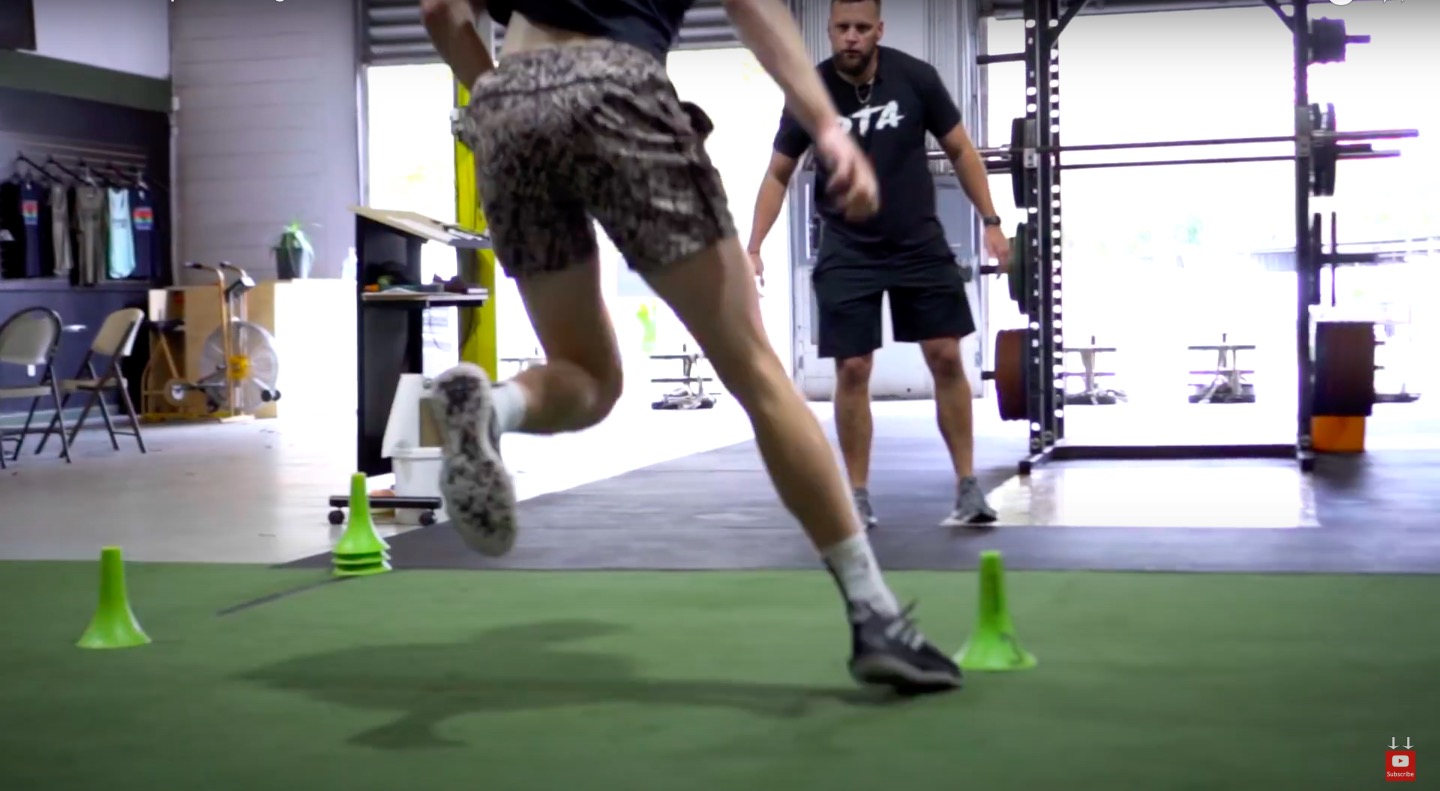
There’s a couple variations I like to hit with skater jumps. Lateral power is essential for the “turn and sprint” in basketball.
HOW TO: Set up cones about 4-5ft apart. You’re going to hit lateral, skater jumps.
For the first set holding for one second after each landing to stabilize. On the next set you’ll go back and forth for speed, trying not to touch down too long between each jump. You can advance this even further by reaching down to the ground trying to touch each cone with your hand.
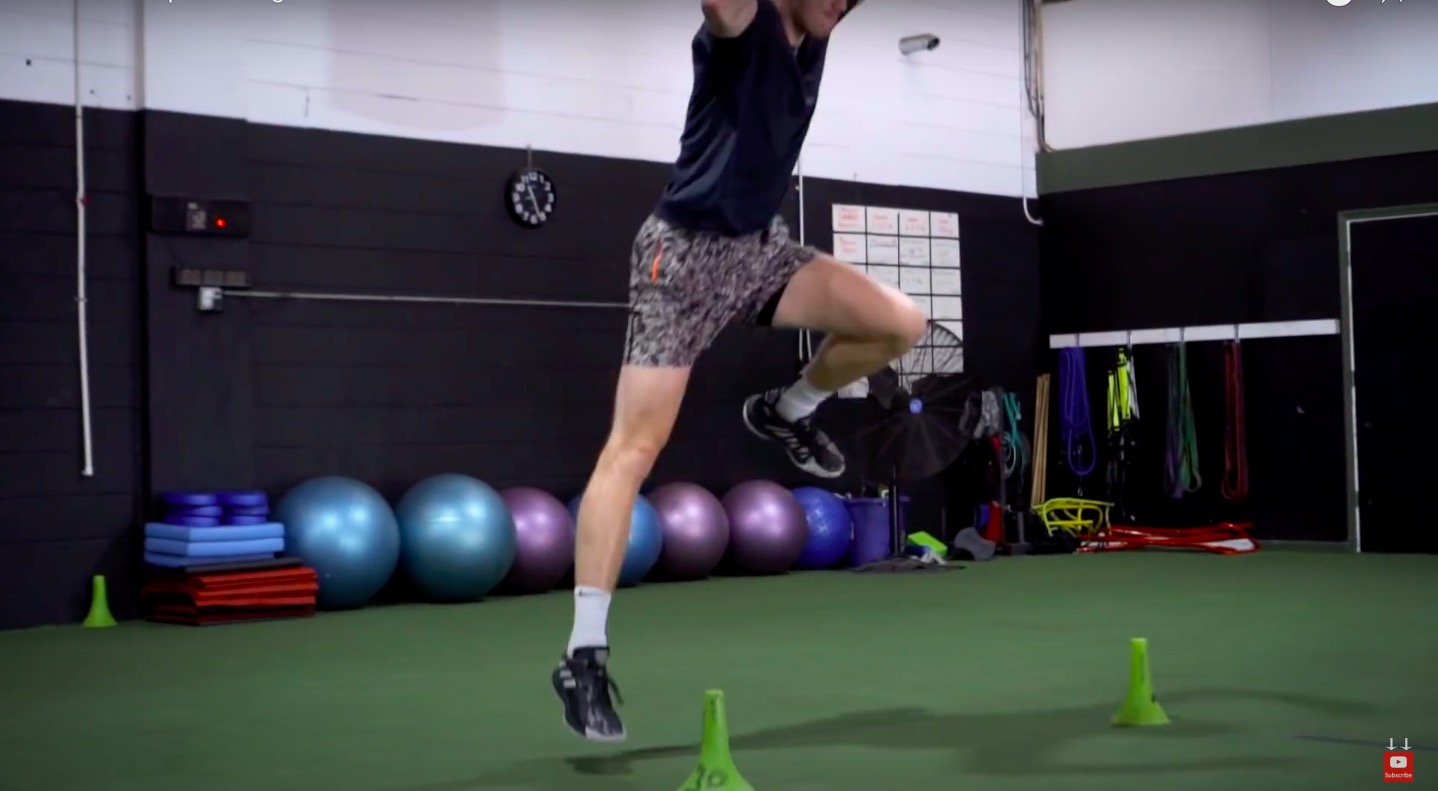
- Skater to Vertical Jump: for this variation, you’re going to perform your lateral skater jump. This time, as you land before the cone, take a single leg vertical hop up in the air before propelling back over to the other side.
Perform 1 set of each variation, hitting 10 alternating reps.
7A. Trap-Bar Split Squat (Rear Leg Elevated)
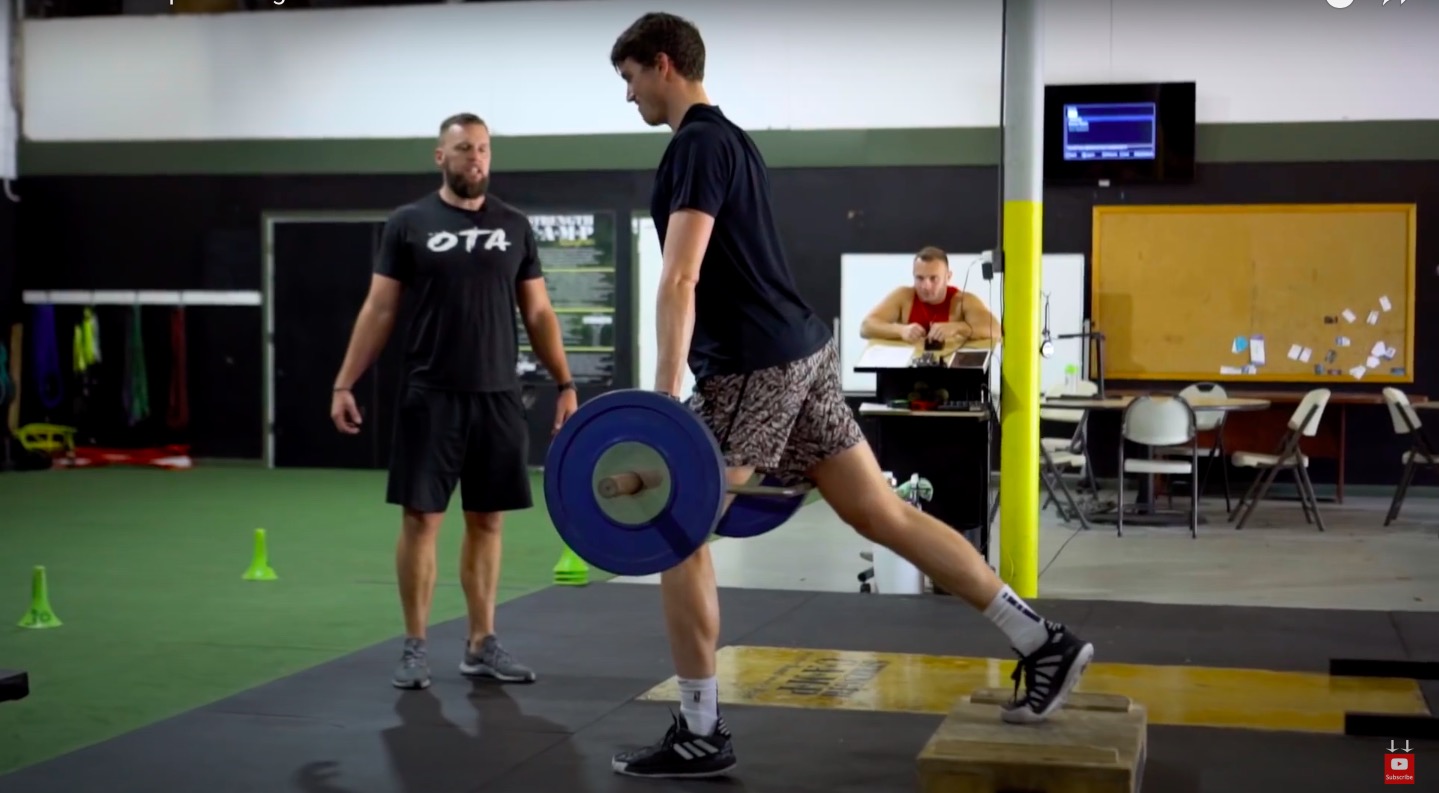
You guys know I love using anything with the trap bar: especially when it comes to vertical jump training. The trap bar puts you in the perfect position for force production since it’s a powerful hinge movement.
HOW TO: Line your body up in the center of the trap bar, elevating your back foot on a small plyo box a few inches off the ground. Make sure that your hips stay squared and the back toe faces directly down.
Sink the hips down to take hold of the trap bar. Keeping the back flat and the core tight, drive straight up using the glutes to explode. Perform 3 sets of 4x each leg
7B. Iso- Step Downs

You’re going to super-set your trap bar split squats with these iso step downs. The power in this exercise comes from isometrically maintaining the quarter squat position on a single leg.
HOW TO: Keeping one foot flat on a bench, take a deep bend in that knee, (so much so that it allows you to touch the ground with the other foot). Holding that isometric position, you’ll take quick steps – bringing the back foot from the floor to the bench with speed.
Hit 10 reps on each leg between your split squats.
For more drills to improve your game check out this 10 minute plyometric workout for basketball.
ELITE VERTICAL JUMP
If you’re looking to dunk and score more points on the court, it’s all about hitting an elite vertical jump.
Improving your game requires more than just a great workout though.
In fact, you need a well developed program that dives into the specifics of vertical jump training for basketball.
To learn more on the approach I take with my athletes, look no further than my newest program: Elite Vertical Academy.
This is the latest and greatest of vertical jump progressions.
Here’s where you’ll find all my best secrets to achieving an elite, 42″ vertical.